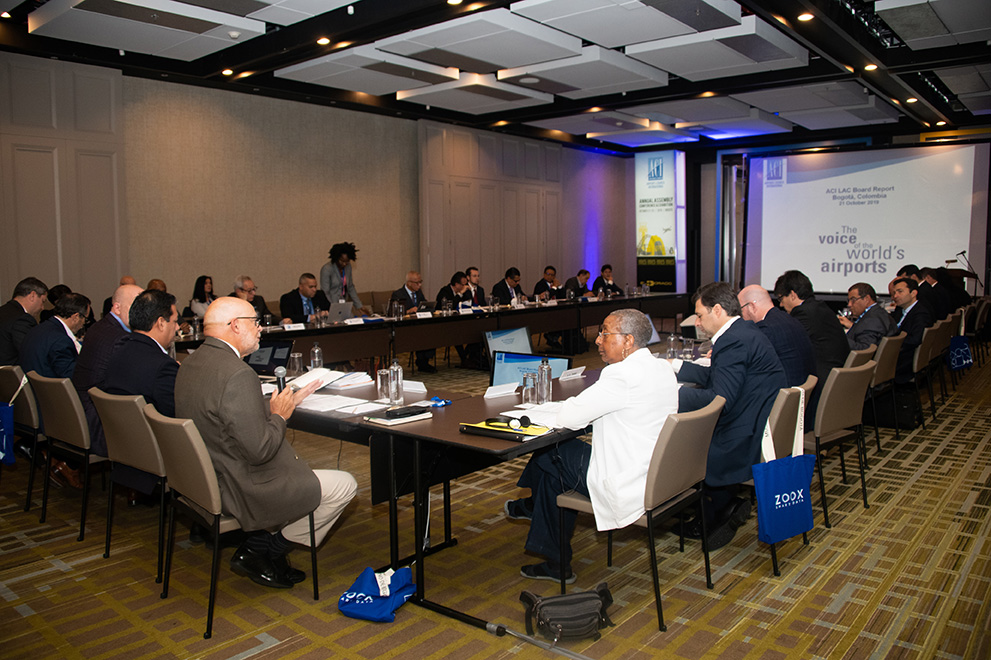AIRPORTS COUNCIL INTERNATIONAL LATIN AMERICA – CARIBBEAN MEETS IN BOGOTÁ

The average growth rate in passenger traffic in Latin America between January and June 2019 is 5.6% per annum. This was announced by the Airports Council International Latin America – Caribbean (ACI-LAC) during today’s Board meeting in Bogotá.
Andrew O’Brian, President of ACI-LAC, explained that this growth is greater than the global average of 3.6% per annum. “The region is registering higher growth rates than other areas of the world. This is because in Latin America and the Caribbean the air transport sector still has much room to develop. The large distances that must be covered, together with the lack of other efficient means of transport, creates a scenario in which aviation will contribute significantly to linking cities and countries”, he said.
The meeting discussed other important topics for the development of the industry in the region, such as the Airport Excellence Program in Airport Security, and the Program for Improving the Passenger Experience in Airports. Corporación Quiport has been a pioneer in these programs on a regional level and the experience in Quito airport has served as a model to replicate in other airports.
ACI World and ACI-LAC hold high level events
Airports Council International at global level (ACI-World) and its regional chapter in Latin America and the Caribbean (ACI-LAC) are meeting at several events from yesterday until October 23 in the Colombian capital for discussions on the future of the airport industry.
Yesterday the ACI World CEO Forum took place, when the top representatives of more than 40 global airports debated topics of great interest for the industry. Mr. Andrew O’Brian, President and CEO of Quiport, represented the Latin America and Caribbean region as President of ACI-LAC within this group of leading global airports. The objective was to highlight the vision and the proposals developed in Latin America and the Caribbean.
The meeting discussed highly topical subjects such as defining the position of airports towards climate change and developing a joint strategy which leads the airports to a carbon neutral footprint by 2050.
The meeting also discussed the need to increase air space capacity by optimizing the current capacity, and by new procedures. This is one of the issues that could limit the growth of airports.
The event continues tomorrow with the start of the ACI-LAC General Assembly attended by 350 representatives from the region’s airports.
